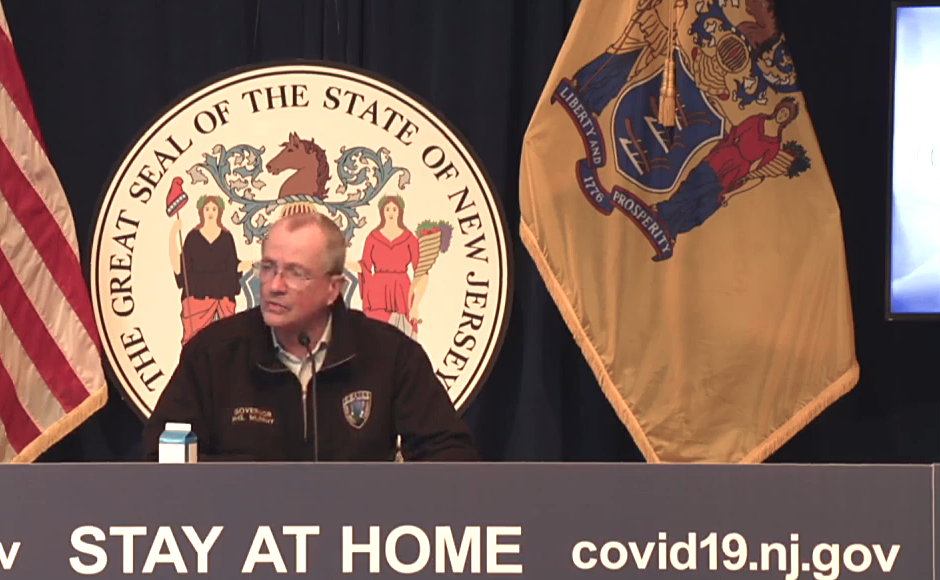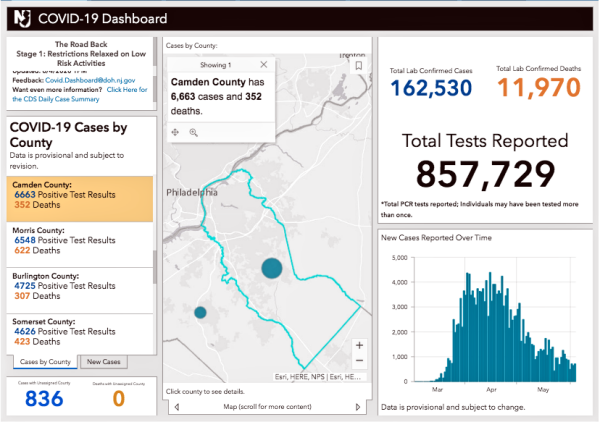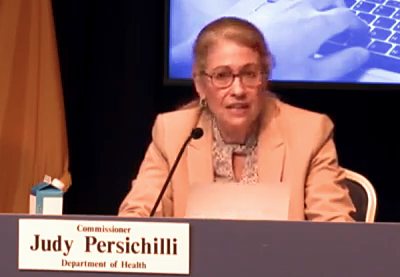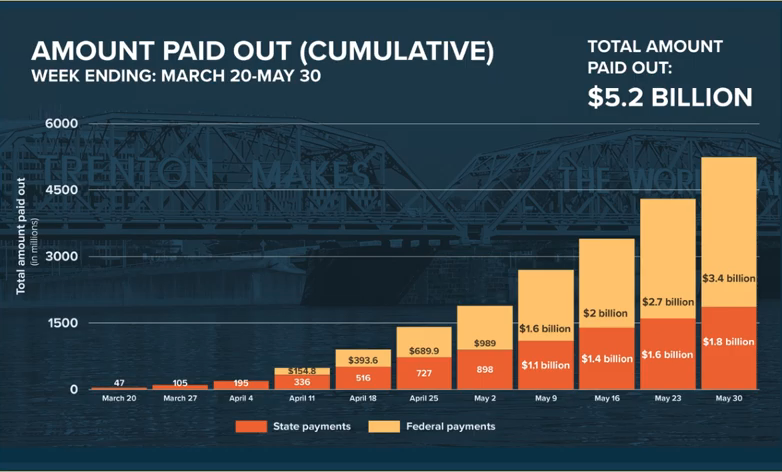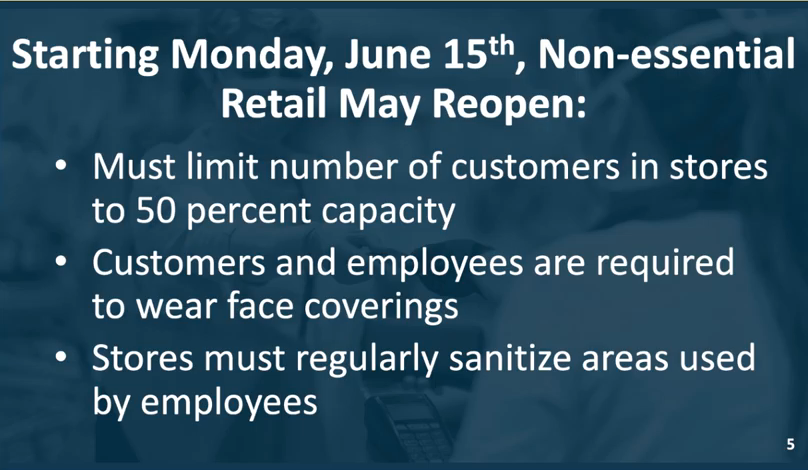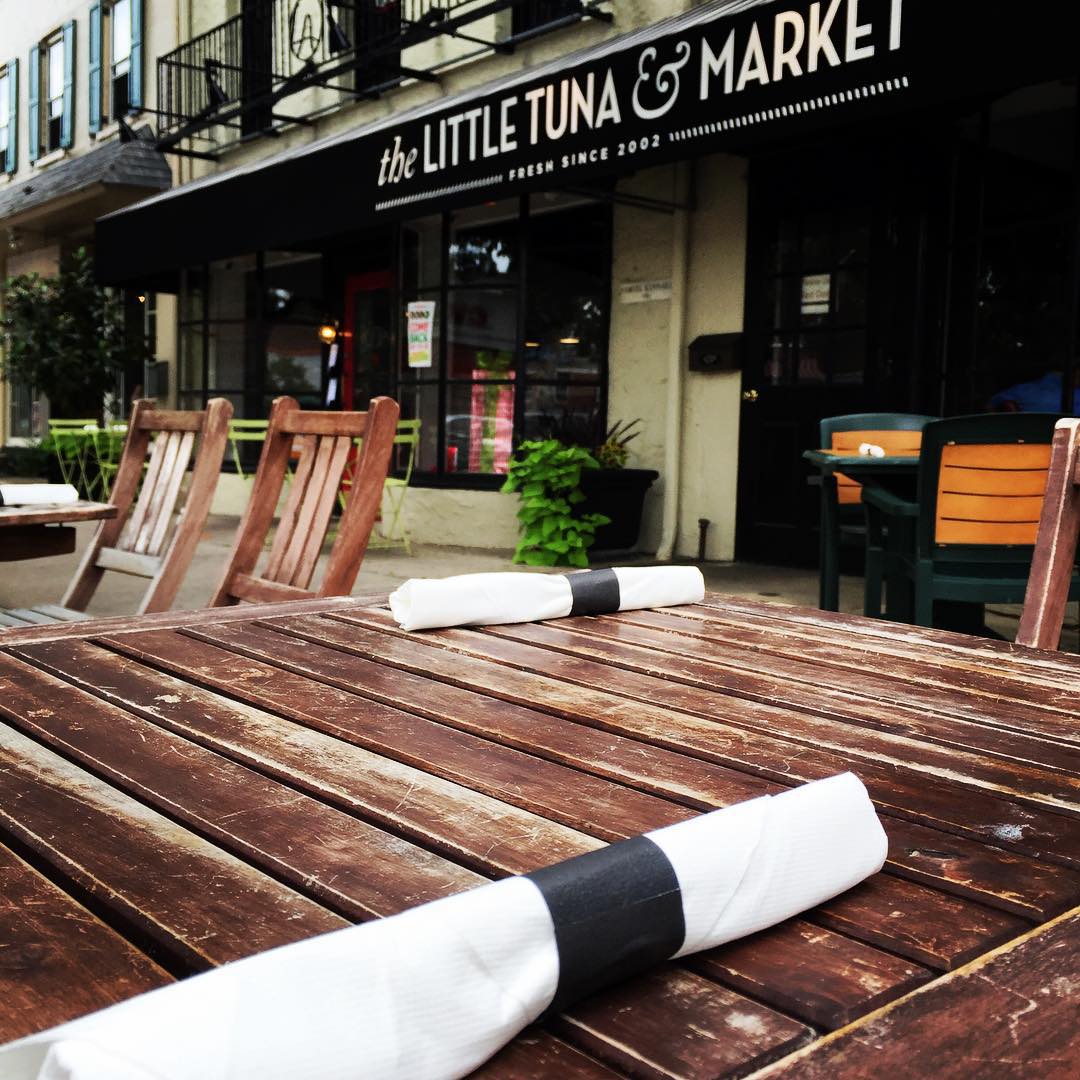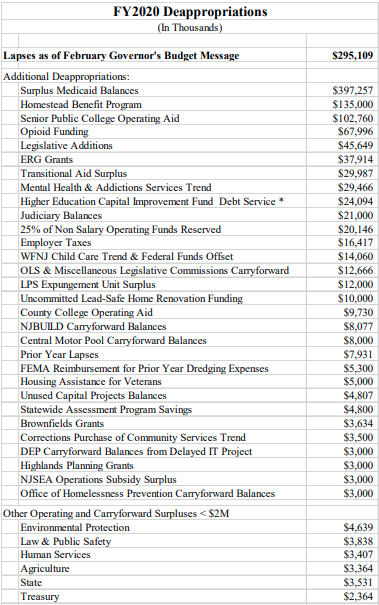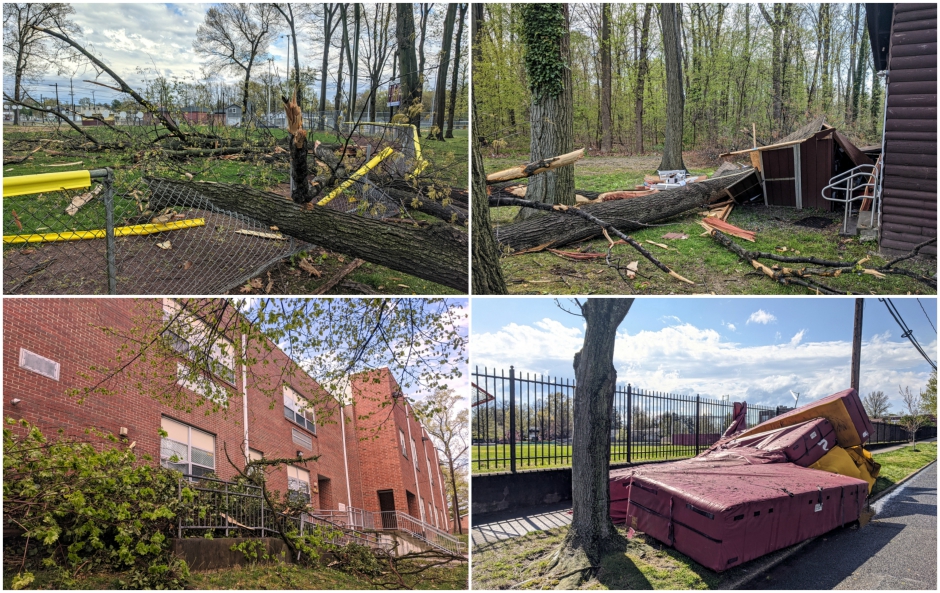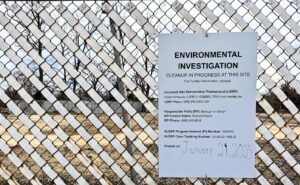Plus: unemployment figures continue to decline for a fourth straight week, and the state will become the first in the nation to add climate change curriculum to its K-12 student learning standards.
By Matt Skoufalos | June 4, 2020
Another 603 New Jersey residents have tested positive for novel coronavirus (COVID-19), bringing the statewide total to 162,530 cases, Governor Phil Murphy reported Thursday.
Sadly, 92 more residents have perished from complications related to the virus, bringing the statewide death toll to 11,970 lives lost during the pandemic.
Throughout New Jersey, 1,982 people are hospitalized with a case of COVID-19, or while awaiting confirmation of their symptoms.
It’s the first time since March that fewer than 2,000 people have been hospitalized with the virus, and Murphy called it “a milestone for our recovery.”
Of those 1,982 patients, 537 are in intensive or critical care; 406 of ICU and critical-care patients (76 percent) are on ventilators.
In the past 24 hours, 71 New Jersey hospitals admitted 33 new COVID-19 patients and discharged 291 others, either to a lower-acuity care setting or to their homes, although Murphy cautioned that the data may be artificially low due to potential reporting errors in North and Central Jersey.
The statewide average of COVID-19 spot positivity testing stood at 4.2 percent May 31, from about 20,000 recorded samples; in South Jersey, it’s higher, at 6.4 percent.
Across New Jersey, 547 long-term care (LTC) centers have reported at least one case of COVID-19, and account for 33,957 infected patients and staff, or 21 percent of total cases.
That includes 22,737 residents and 11,220 staffers sickened by the virus, as well as 5,286 lab-confirmed resident deaths (44 percent of the statewide total) and 108 facility-reported staff deaths.
Of 654 veterans residing in a state-run home, 385 residents have tested positive for COVID-19, and 145 have died from complications related to the virus.
Five veterans presently are hospitalized with COVID-19, and 212 have recovered from the virus.
At state-run psychiatric facilities, 211 of 1,235 patients and 487 staff members have tested positive for COVID-19.
Seven staffers and 13 patients have died from complications related to the virus; unchanged since last week.
Twenty-one patients are presently receiving care at one of the state’s field medical stations, which have served 472 people in total.
To date, 35 New Jersey children aged 1 to 18 have been diagnosed with pediatric multisystem inflammatory syndrome, said New Jersey Health Commissioner Judy Persichilli. All have tested positive for an active COVID-19 infection or COVID-19 antibodies; six are still currently hospitalized.
No deaths have been associated with this syndrome in New Jersey.
Unemployment update
Last week, the New Jersey Department of Labor processed 26,752 new unemployment claims, continuing a four-week decline, Murphy said.
In total, 1.2 million residents have filed for benefits since March, and have received $5.2 billion in payouts: $1.8 billion from the state unemployment trust fund, and $3.4 billion in federal dollars.
Some 70,000 New Jerseyans who have already exhausted their benefits are eligible for 13 more weeks of federal Pandemic Emergency Unemployment Compensation (PEUC), and potentially for federal Pandemic Unemployment Assistance (PUA), which provides as many as 39 weeks of additional benefits after state benefits and PEUC both expire.
PUA is retroactive to January 27, 2020, and ends December 31, 2020. PUA recipients also automatically receive the extra $600-per-week federal Pandemic Unemployment Compensation (PUC) benefit through July 31, 2020.
Retail, outdoor dining guidance
As New Jersey retailers and restaurants continue to head towards a June 15 re-opening, the governor offered some guidance for each.
Retailers may only admit shoppers up to half of their fire code capacity at a time, and both customers and staff must wear face coverings.
Businesses are asked to offer special shopping hours for high-risk customers “wherever possible,” must sanitize their properties frequently, and should erect physical barriers between customers and cashiers.
No county or local authority may impose additional restrictions beyond those issued by the state, Murphy said.
Restaurants may offer in-person dining only outdoors, limiting parties to eight people or fewer, and seating tables at least six feet apart from one another. Frequent sanitization and physical barriers from cashiers are also recommended.
Employees will be checked for temperatures and are asked to self-identify if they’re feeling ill; they must wear face coverings at all times, gloves when handling food, and be given frequent breaks to wash up.
All seating areas and shared items, from payment systems to menus, are to be cleaned thoroughly and frequently.
Restaurants are also asked to put up signage asking people to maintain social distance, to keep at least six feet of space between waiting and dining areas, and to revert to takeout in the event of inclement weather.
The only indoor area of the restaurant that may be opened to the public is the restroom, and restaurants must also offer hand sanitizer for customers.
Those establishments that are already authorized to offer alcohol service may apply for a special permit from the state Division of Alcoholic Beverage Control to extend that service to outdoor spaces.
Examples offered include decks, patios, sidewalks, parks, parklets, and other public rights-of-way.
This does not conflict with the sale of to-go beverages, which were previously authorized by the state.
New Jersey’s craft breweries and wineries are limited to their existing privileges, said Murphy’s chief counsel Matt Platkin.
Bonding, federal relief and property taxes
Murphy also answered questions about a proposal to borrow some $5 billion to cover shortfalls in the state’s revenues due to the pandemic, a topic he has frequently addressed for weeks in calls for direct federal cash assistance.
The New Jersey Assembly has already passed such a bill, and it’s now under consideration in the state Senate.
The governor was asked at Thursday’s briefing whether property taxes would climb as a result of the proposed borrowing.
“If we weren’t able to get this bonding, then in the absence of that, we’d be forced to lay off 200,000 at the state level, [and] untold thousands at the local level… [who are] the very people we need right now,” Murphy said.
“You’d have no choice but to raise property taxes.”
Bonding, however is “one weapon we’ve got at our disposal to prevent that, in fact, from happening,” he said.
“That’s the immediate relief that we need desperately to address what otherwise would be huge, $5-plus-billion of cuts or deferrals in the next several months, never mind what the next year would look like,” Murphy said.
Any federal aid package that could be passed could be “and-both as opposed to either-or, if it comes, when it comes,” he said.
“The problem is we have no certainty at all on the federal cash assistance, which is why we need the bonding,” the governor said.
“We have no plans to raise property taxes,” Murphy said. “If we didn’t do the bonding, that’s how property taxes would rise, because folks would have no other choice.”
Climate change education
Finally, the governor announced that New Jersey will be “the very first state” in the country to incorporate climate change education into its K-12 student learning standards.
“With this adoption, climate change education will be incorporated across seven content areas—21st Century Life and Careers, Comprehensive Health and Physical Education, Science, Social Studies, Technology, Visual and Performing Arts, and World Languages,” the governor said in a written statement.
“Climate change standards have also been added to the appendices of the Mathematics and English Language Arts guidelines, which are up for review in 2022,” the statement read.
“The adoption of these standards will strengthen the future of New Jersey’s green energy economy, and we’re going to be relying on this sector to help us get our restart and our long-term recovery,” Murphy said in Thursday’s briefing.
The announcement was especially poignant, as 95,000 residents began the day without power after a derecho—a widespread, long-lived, straight-line wind storm—ravaged the state Wednesday evening, toppling trees and disrupting the electrical grid.

